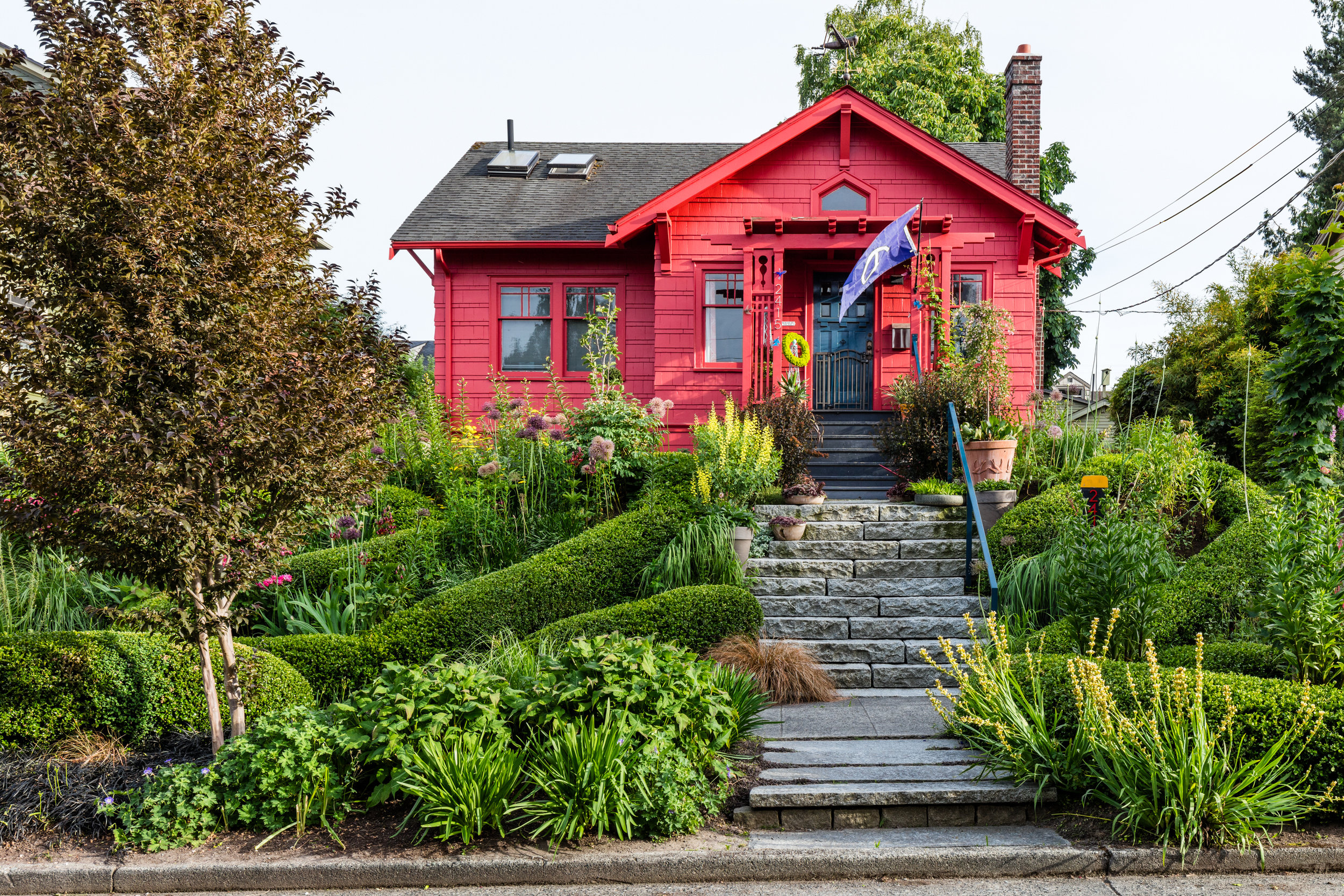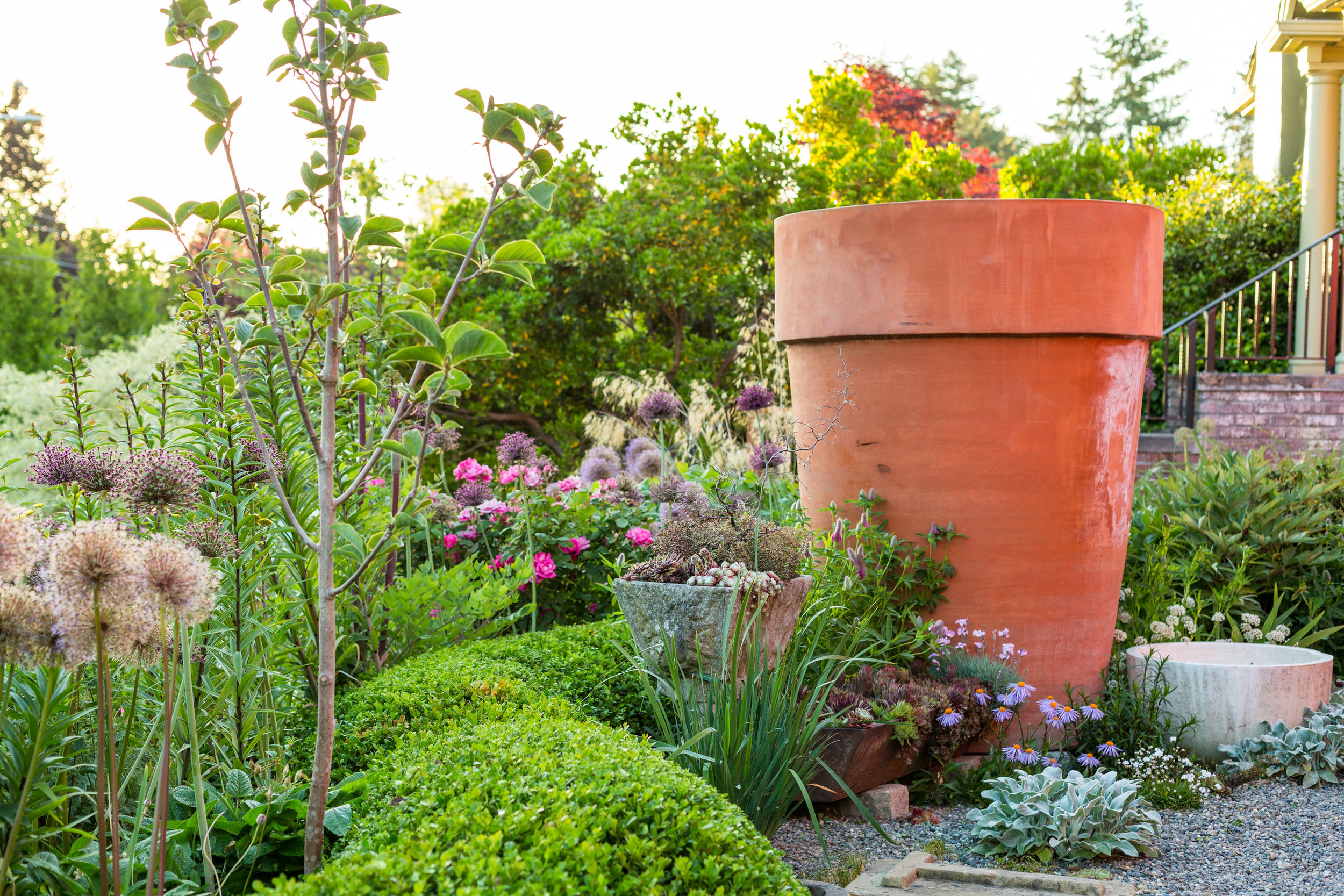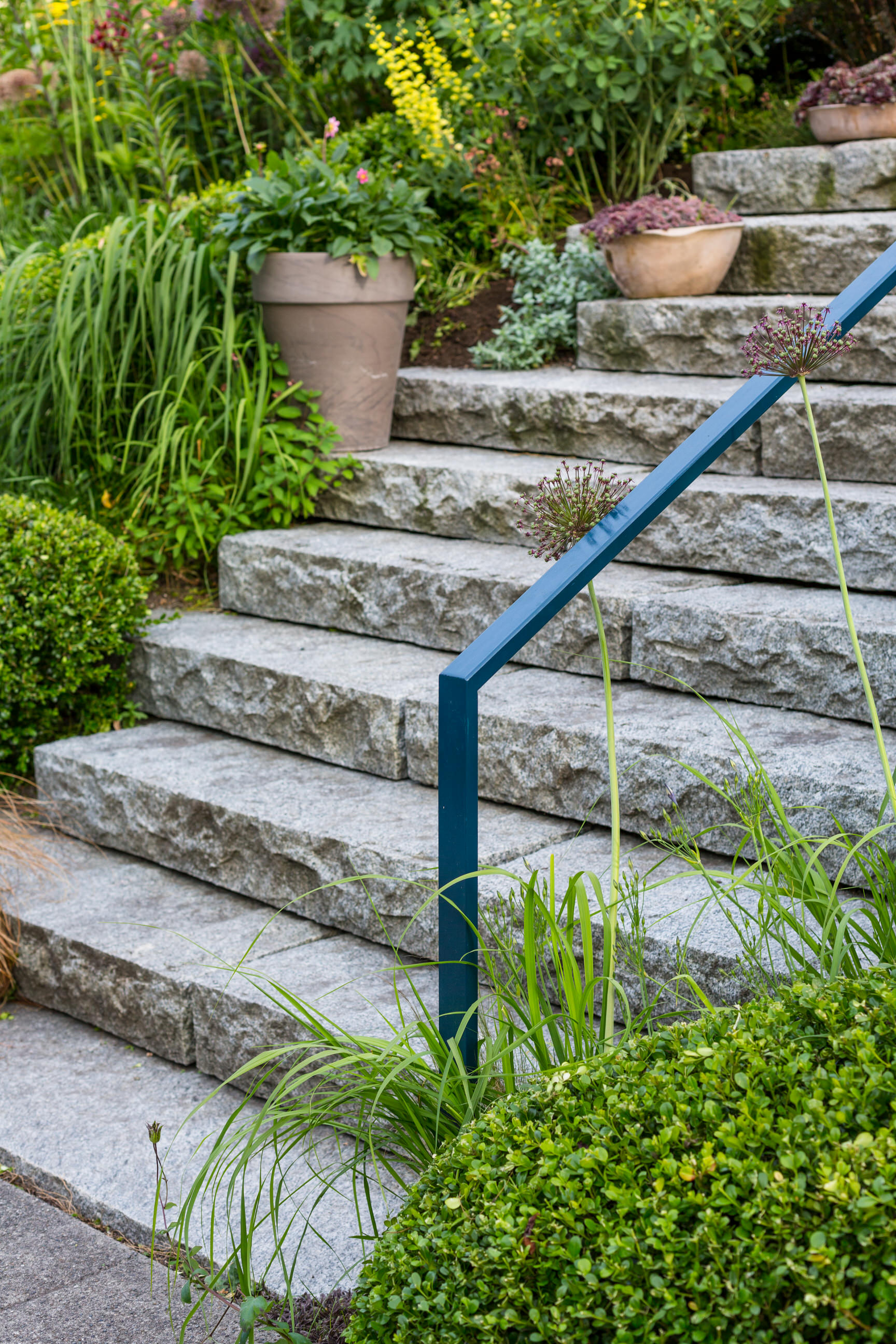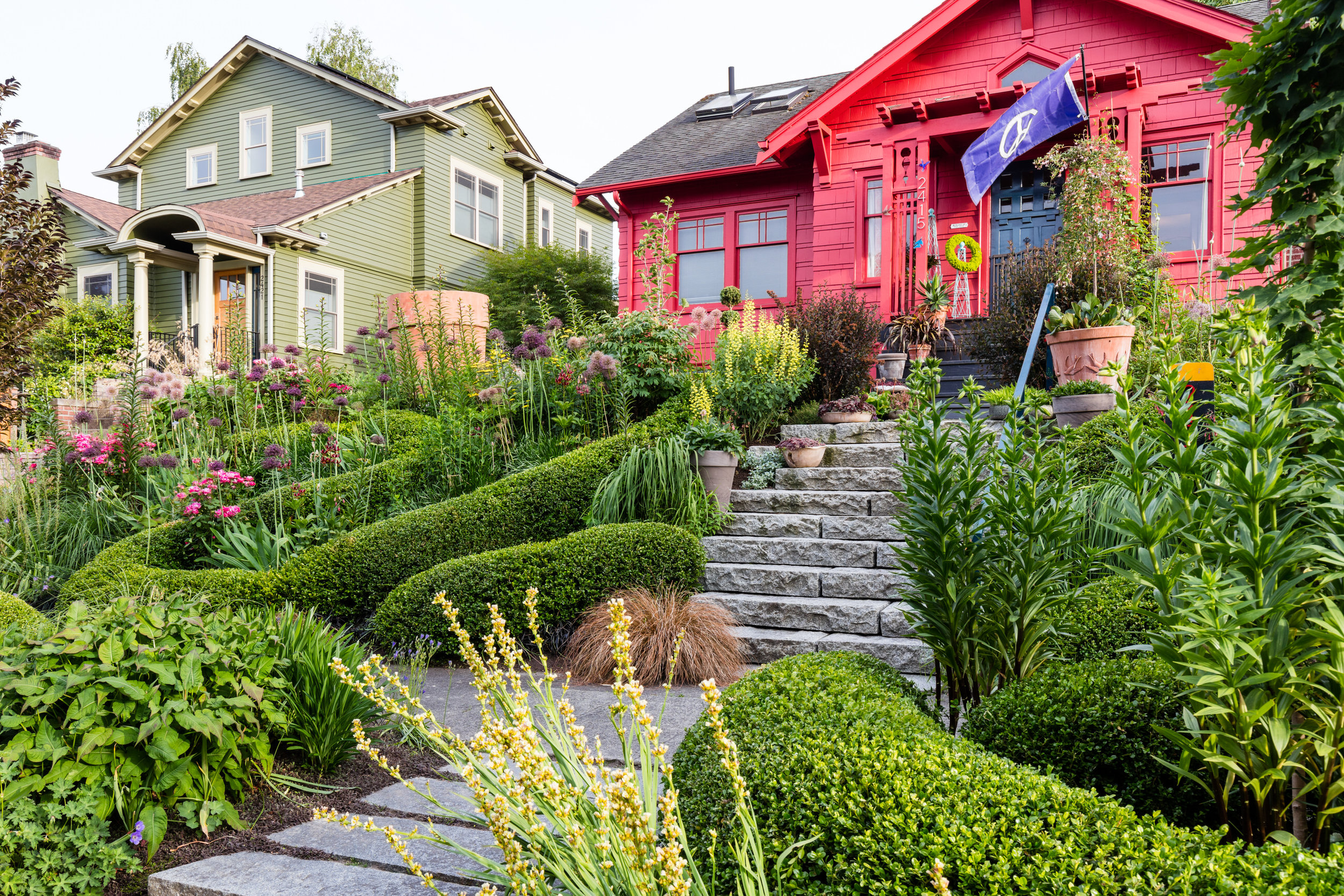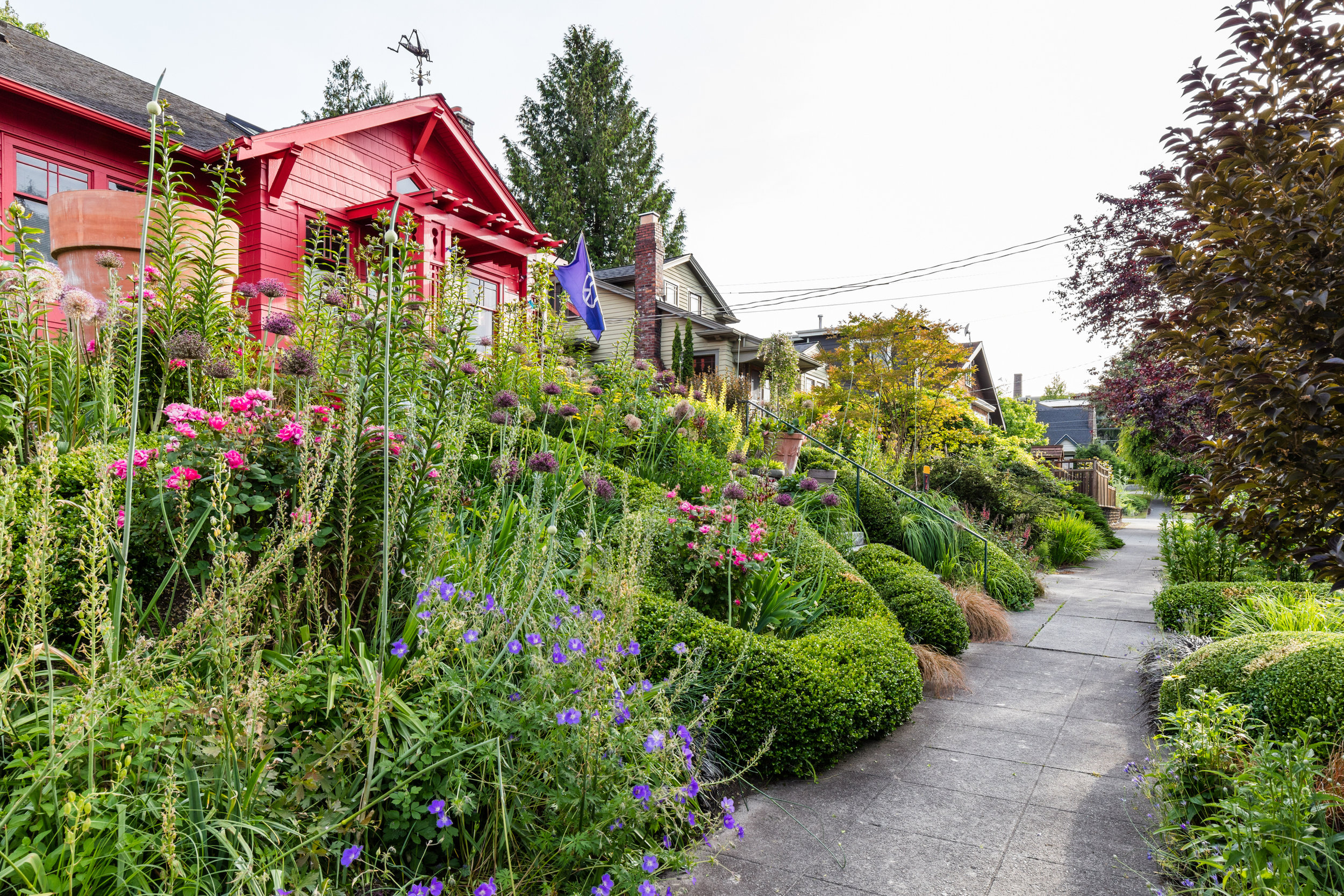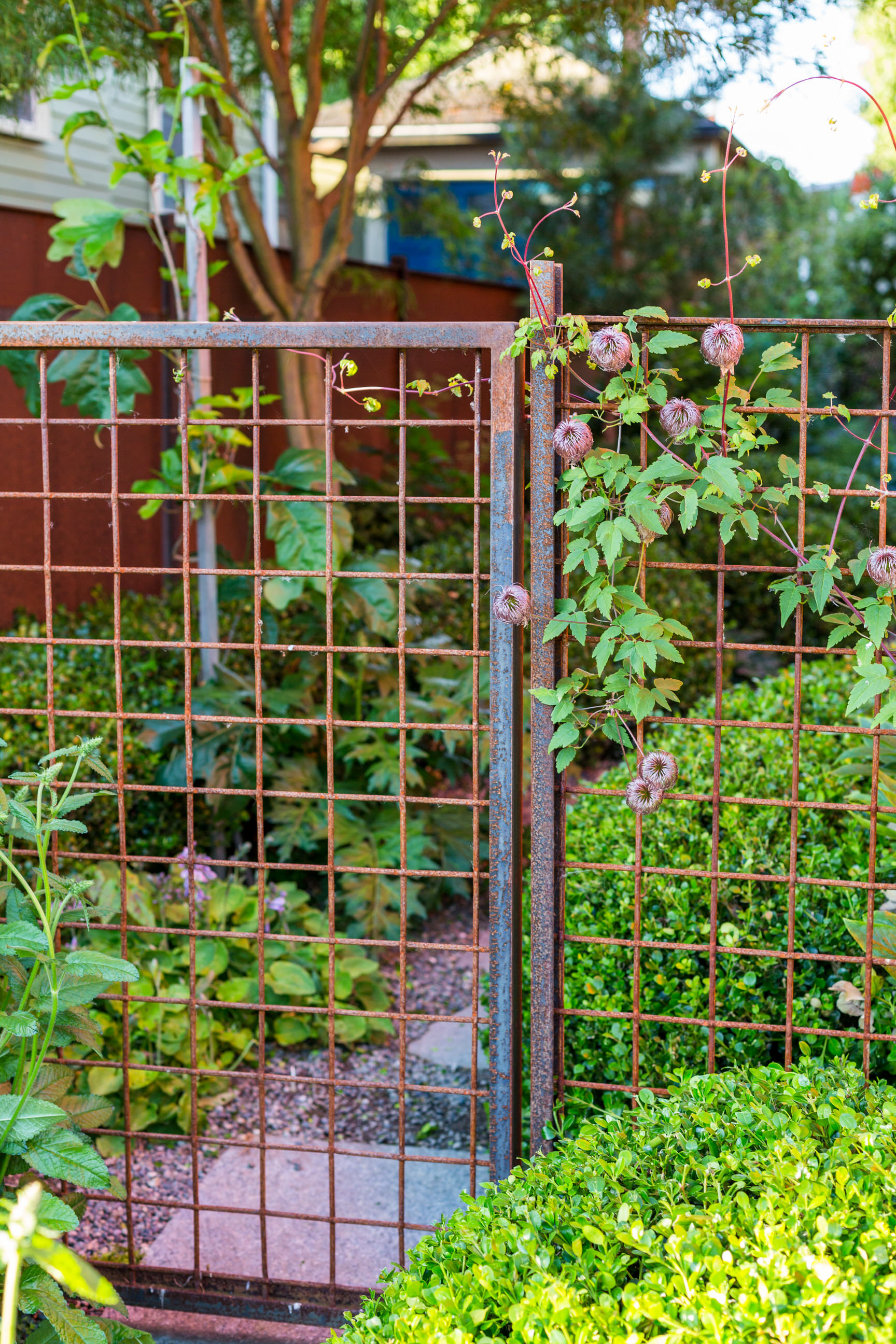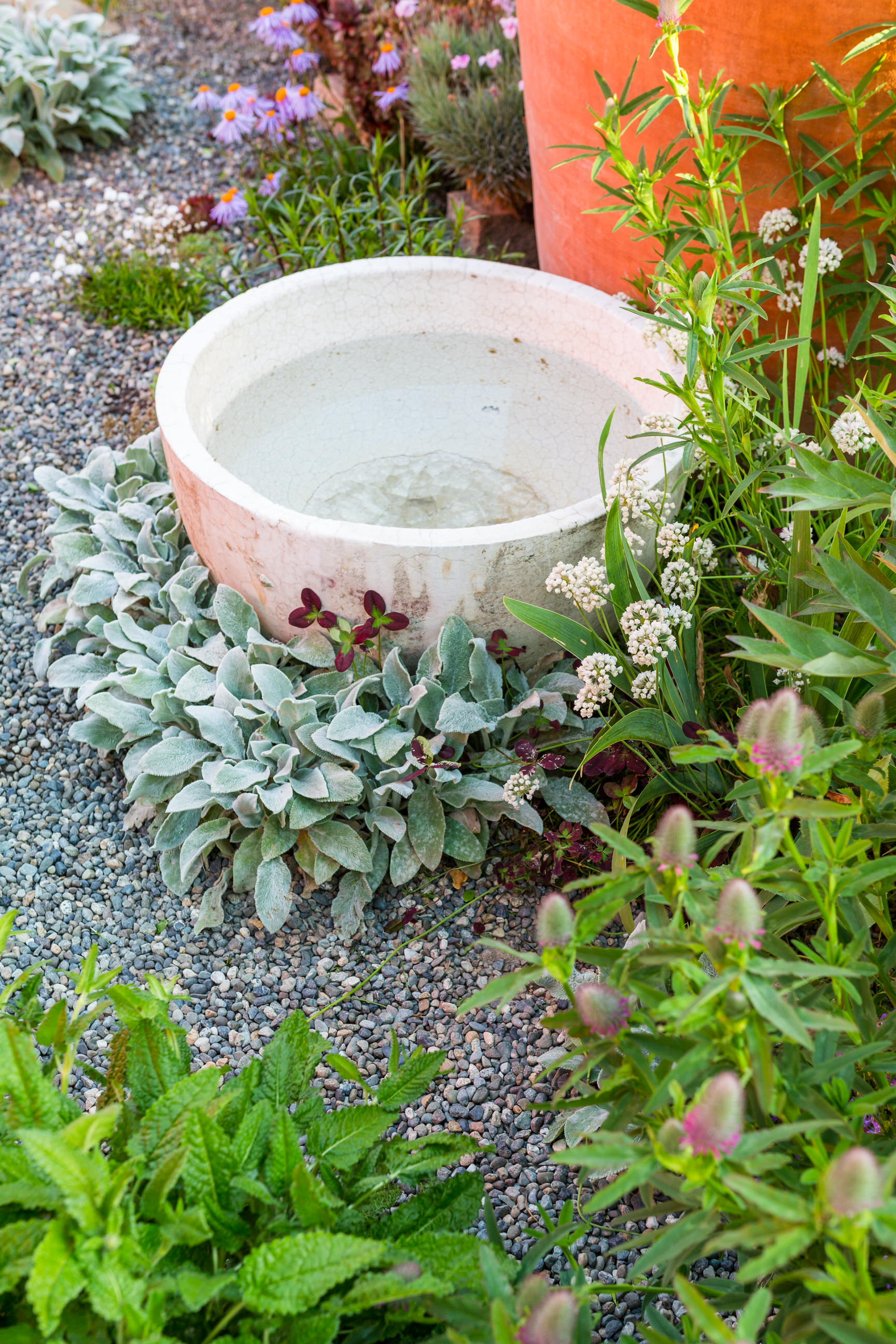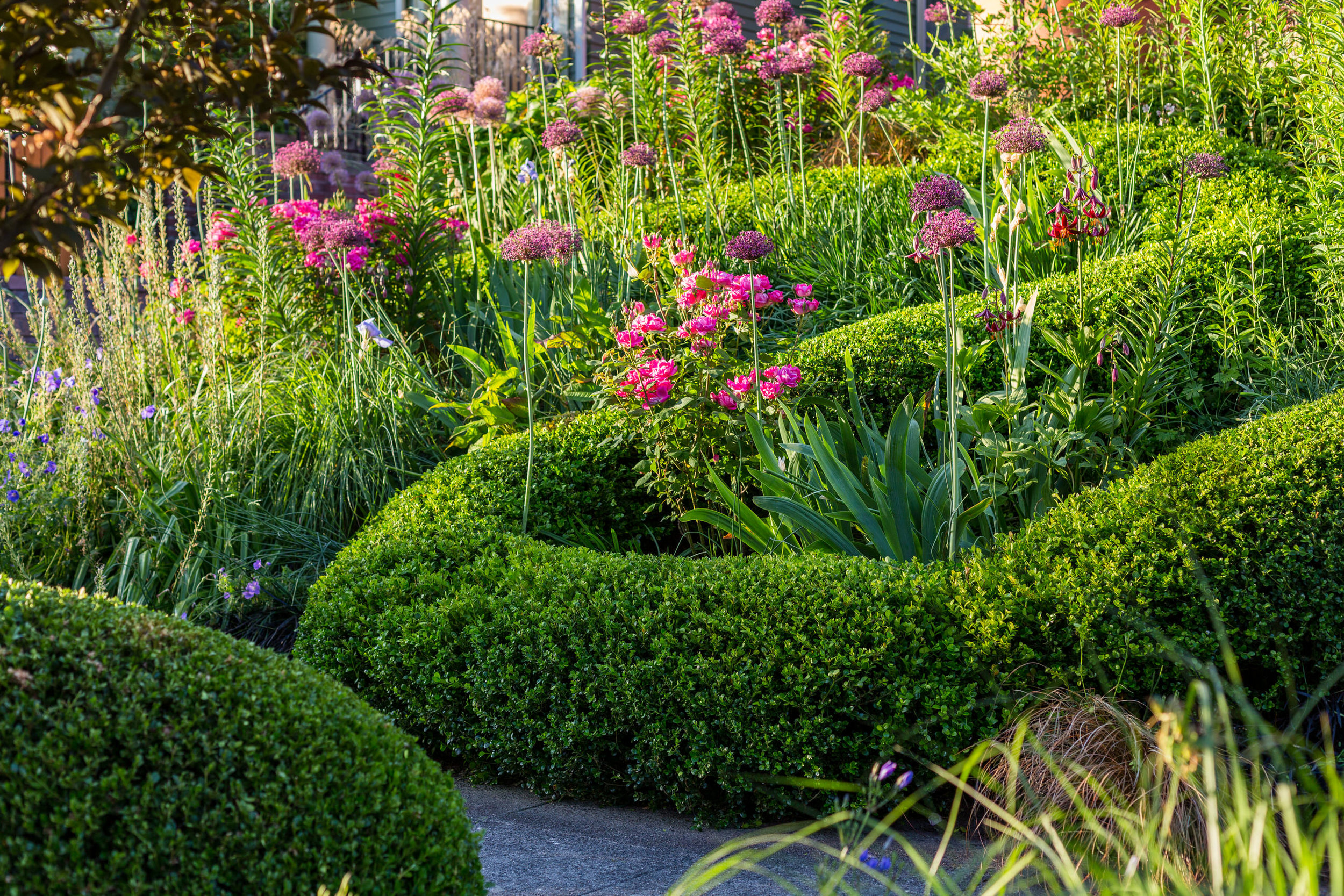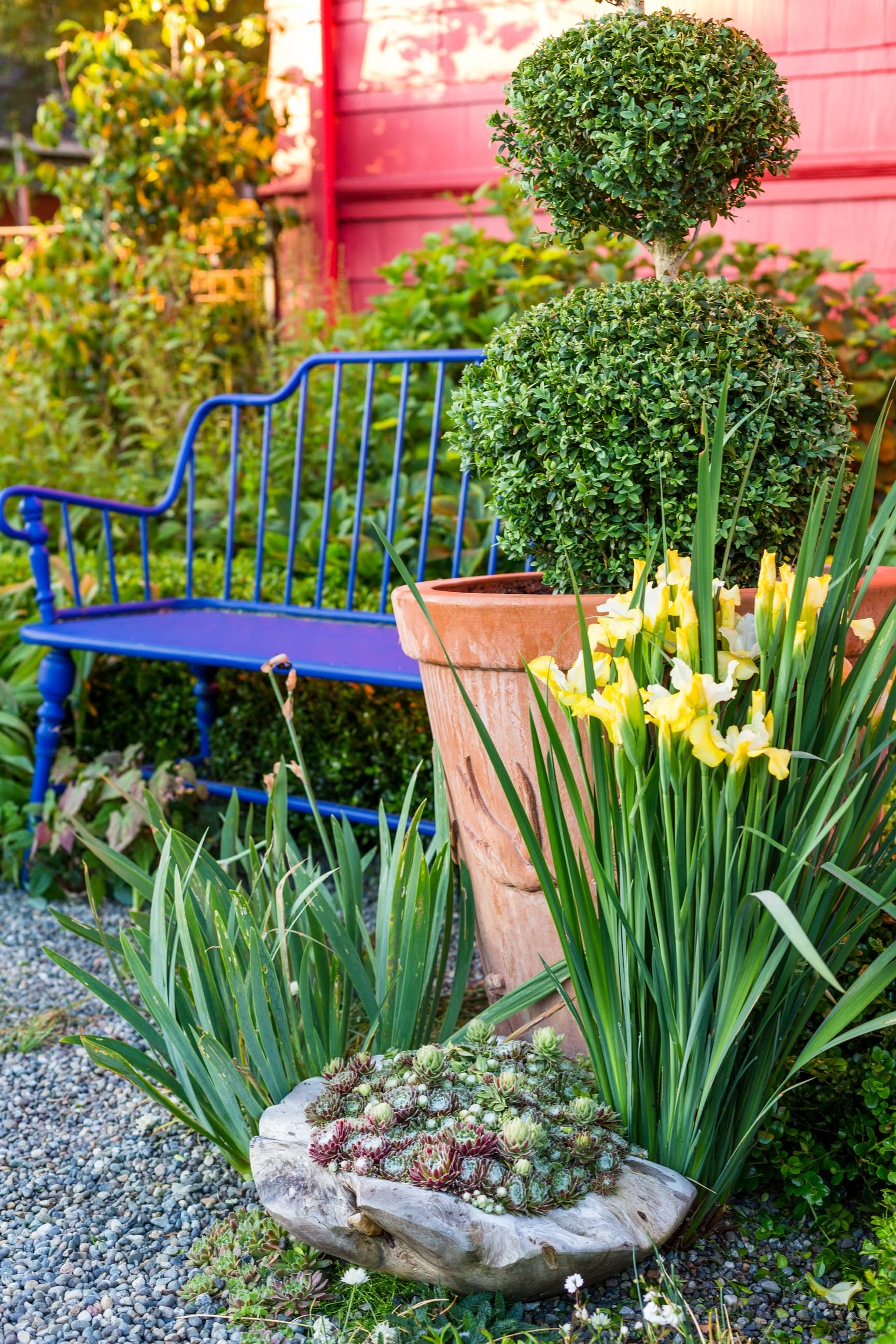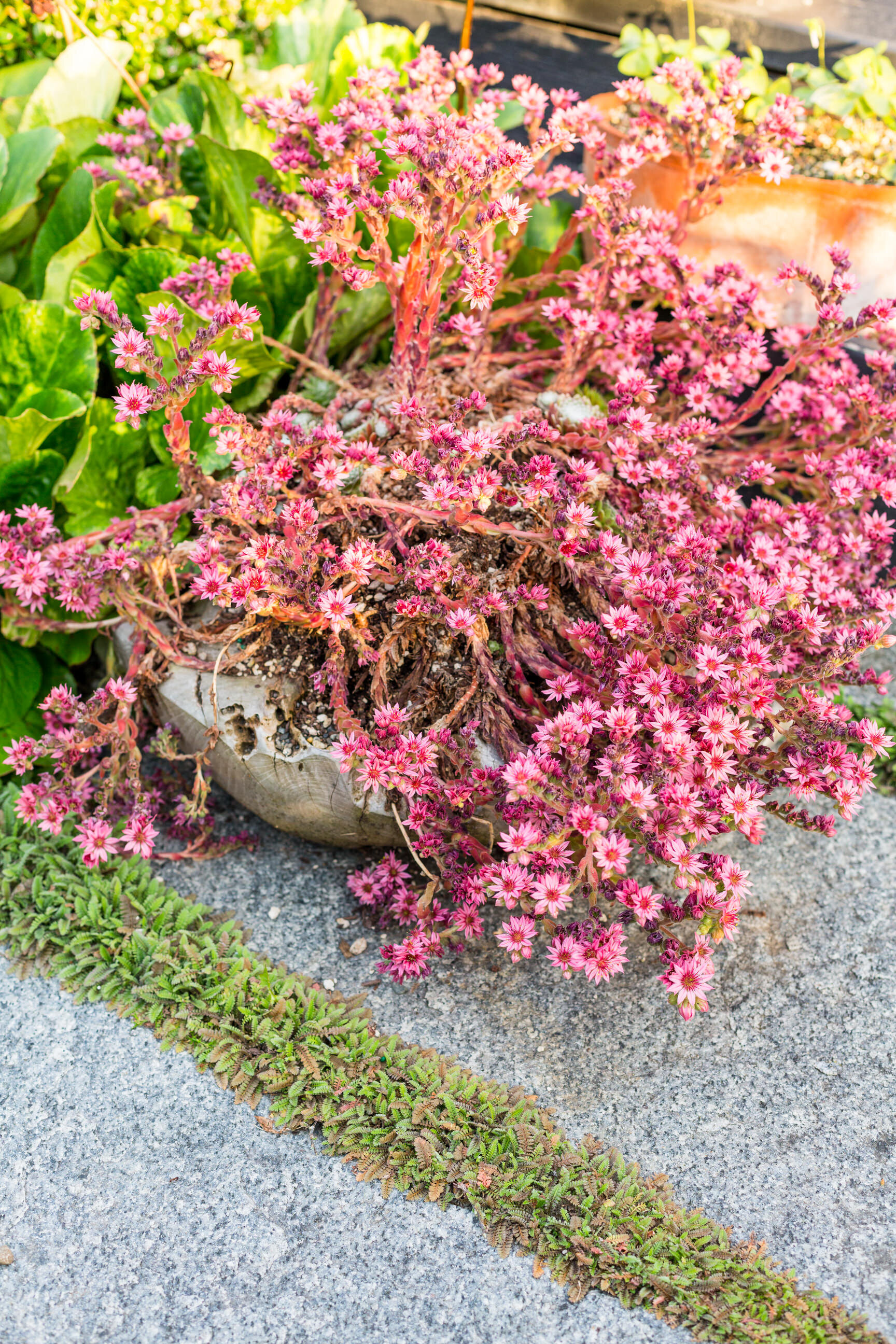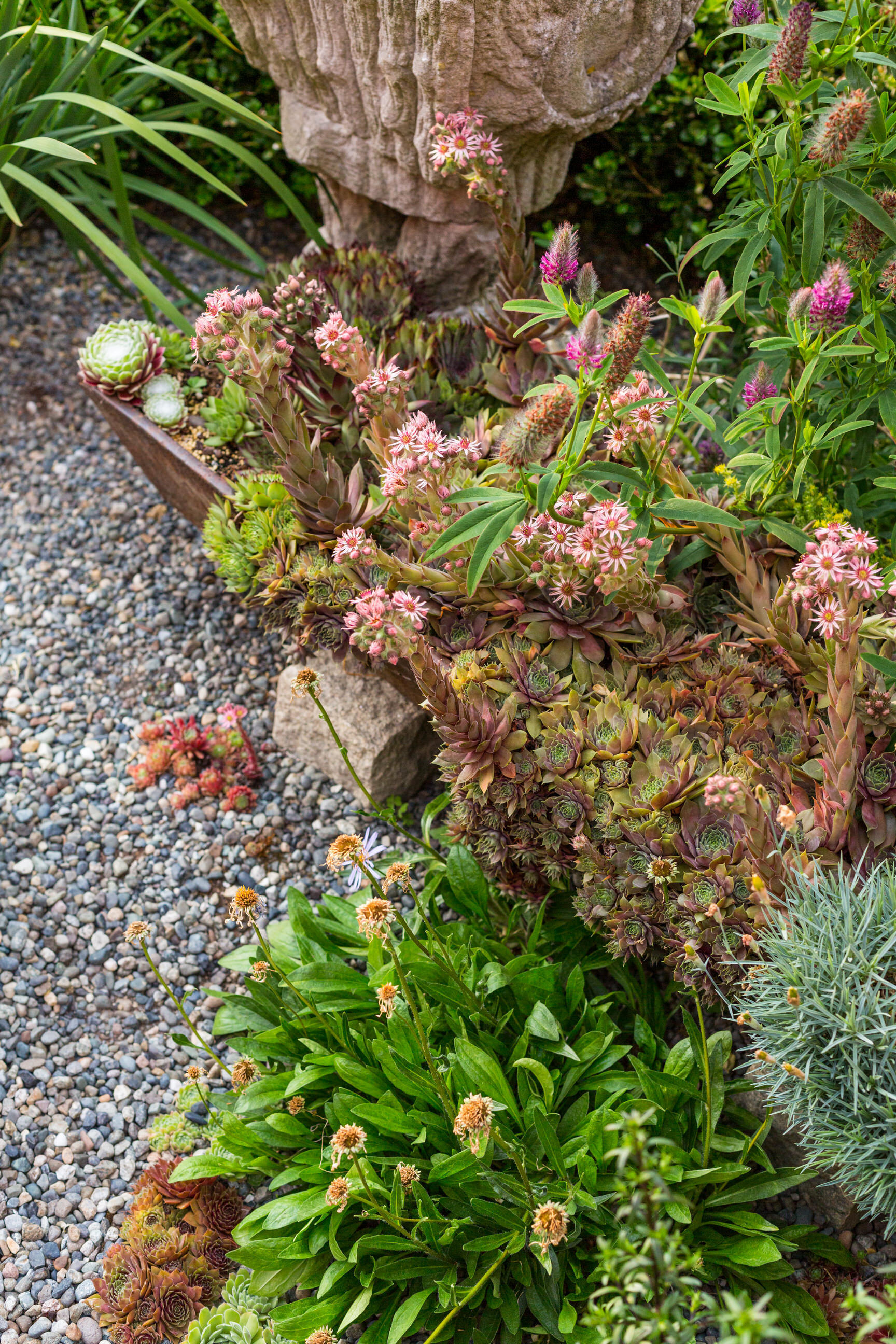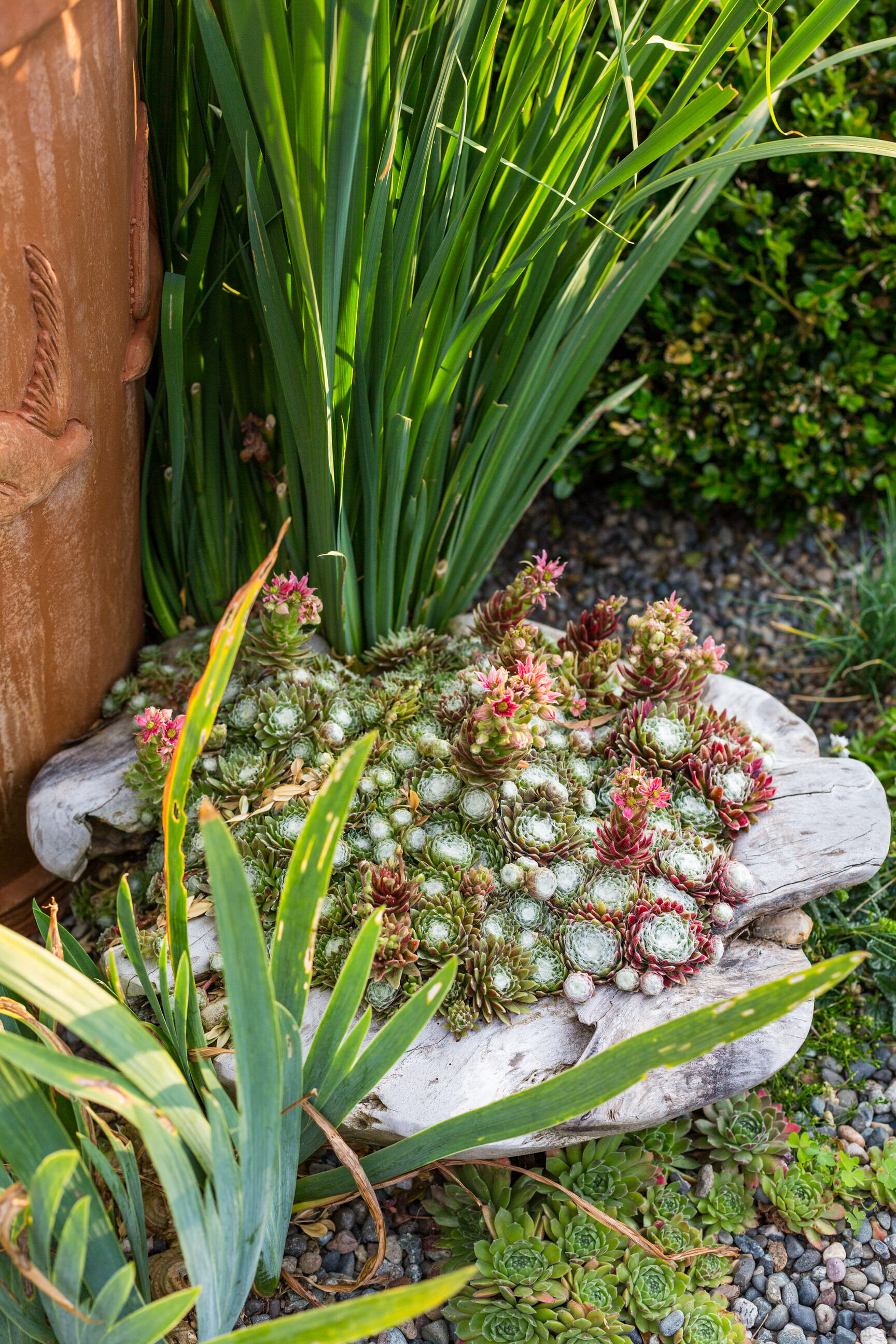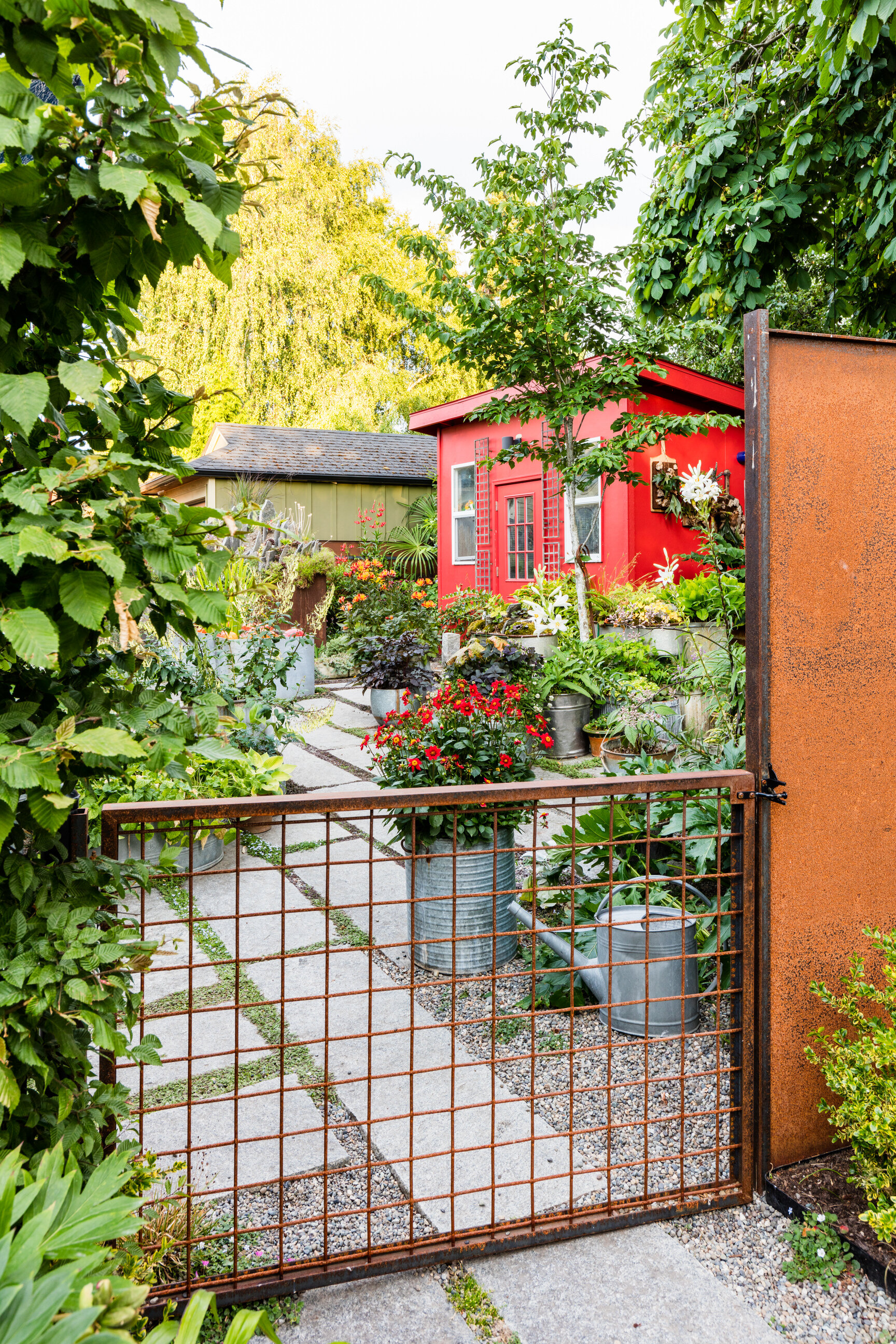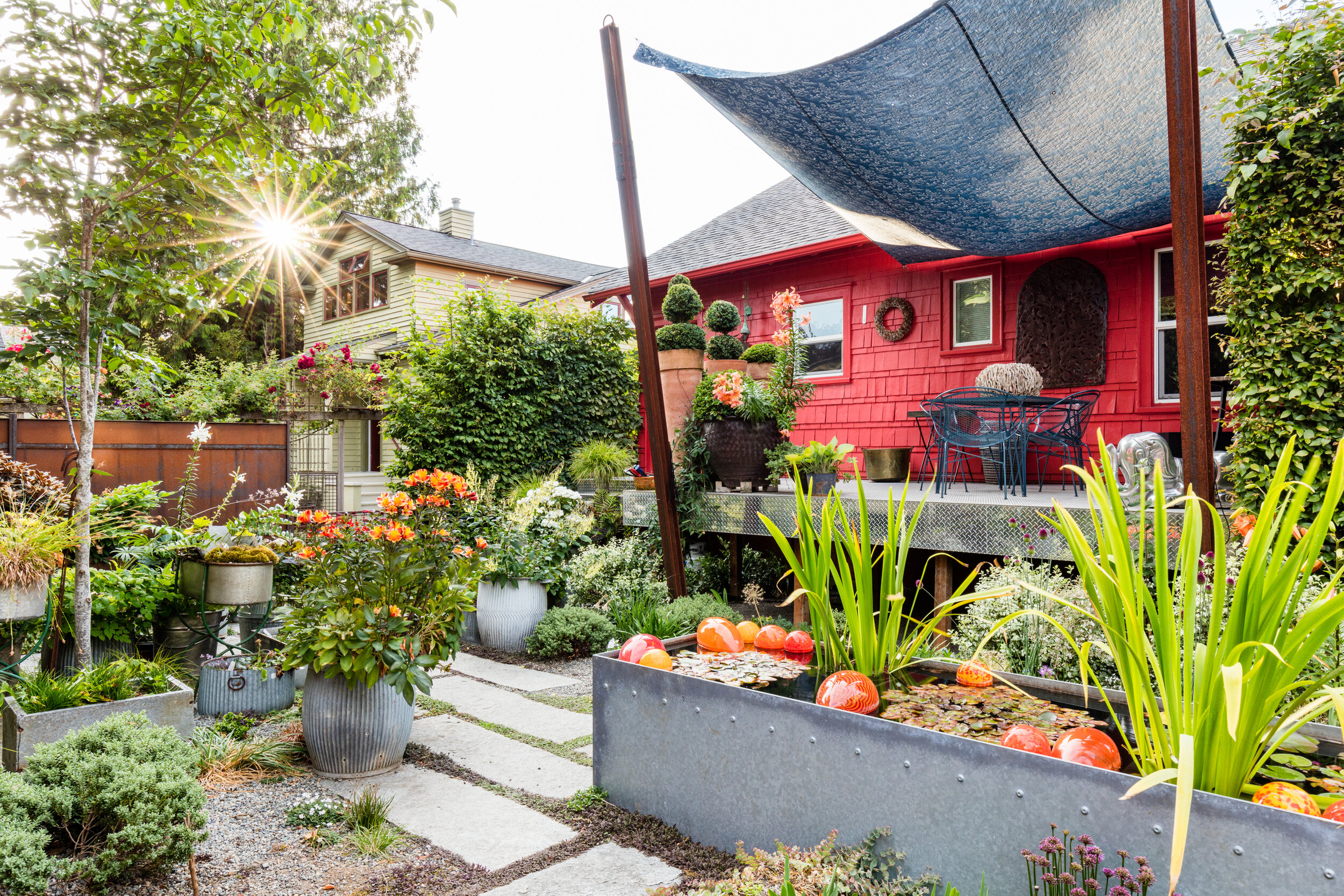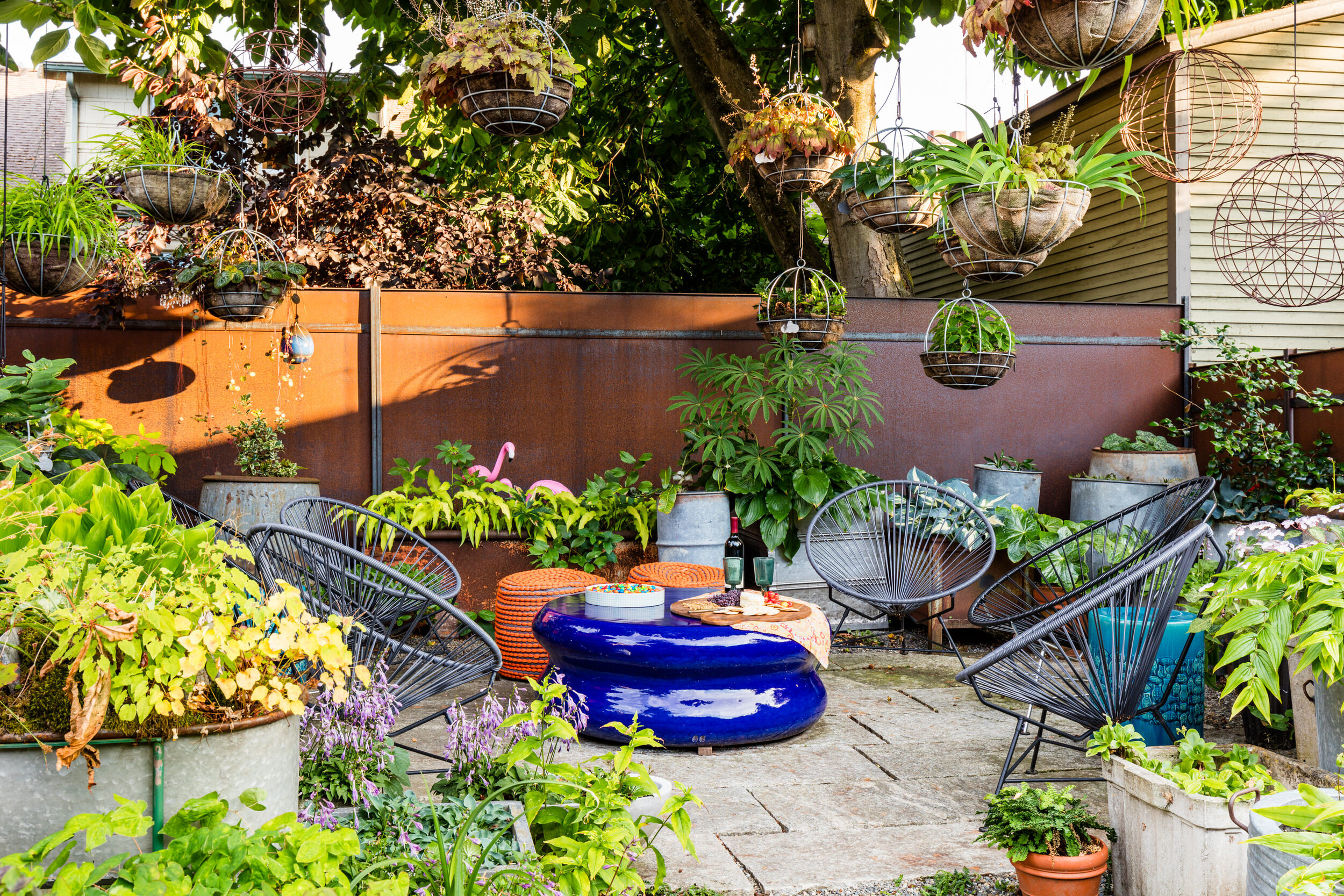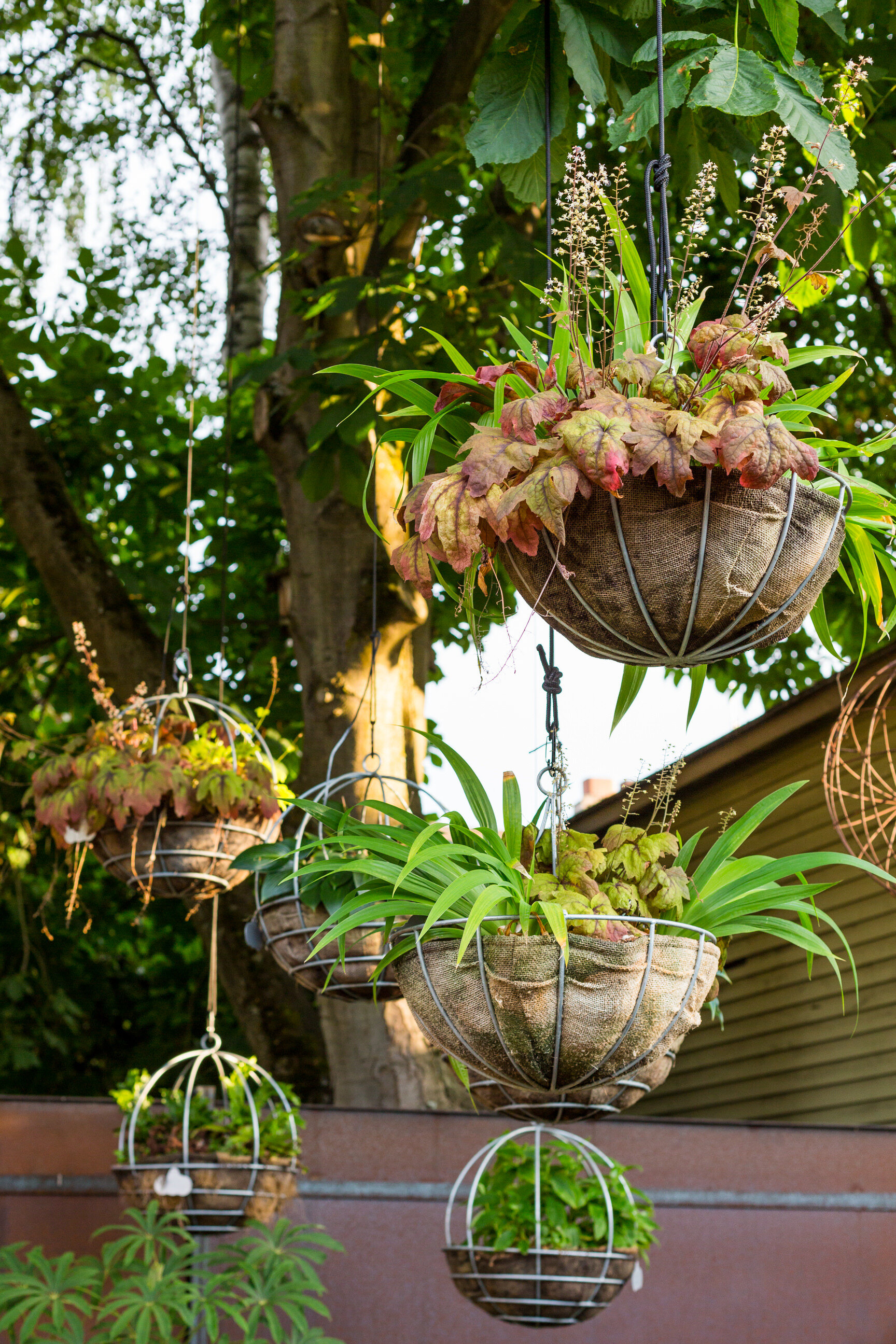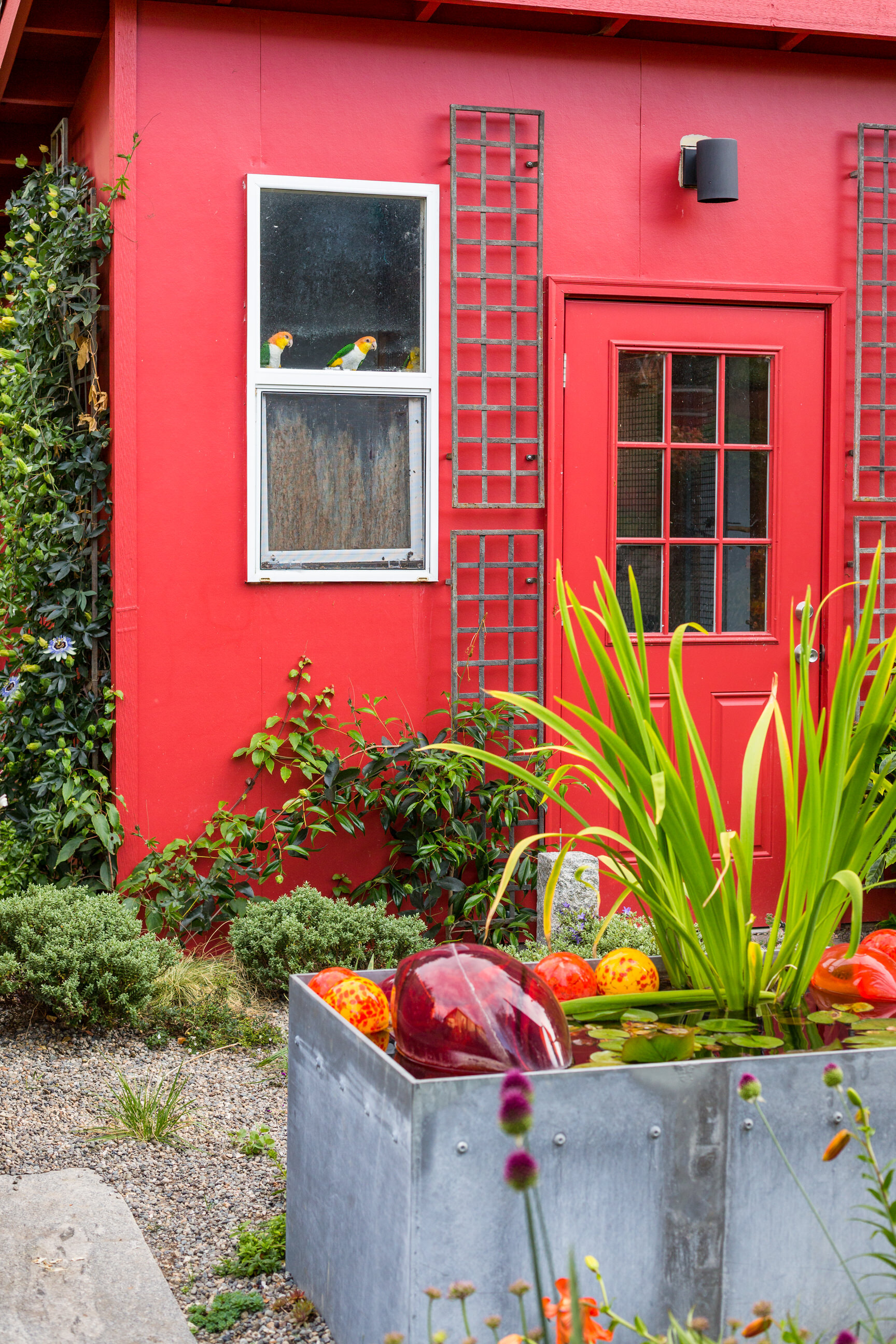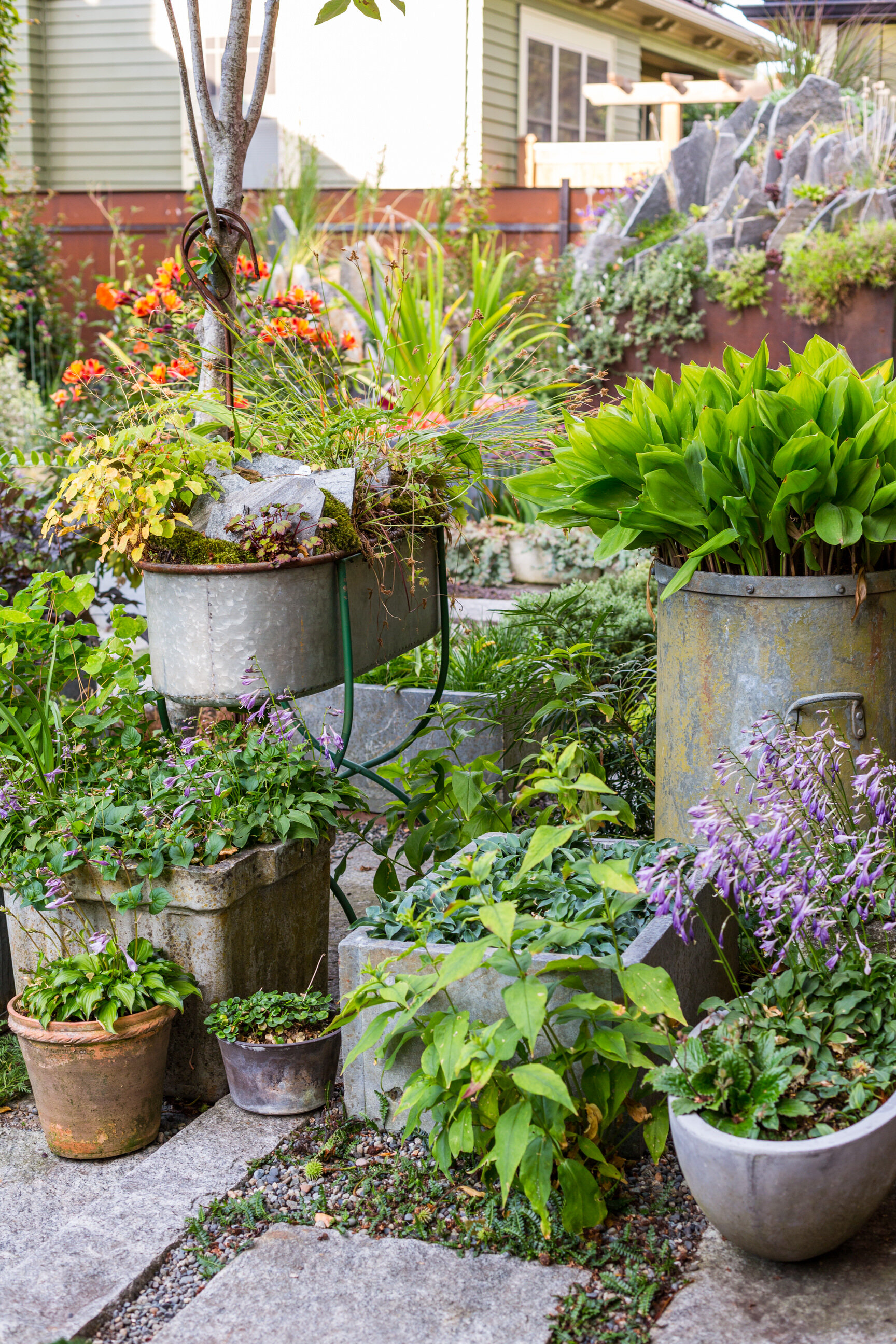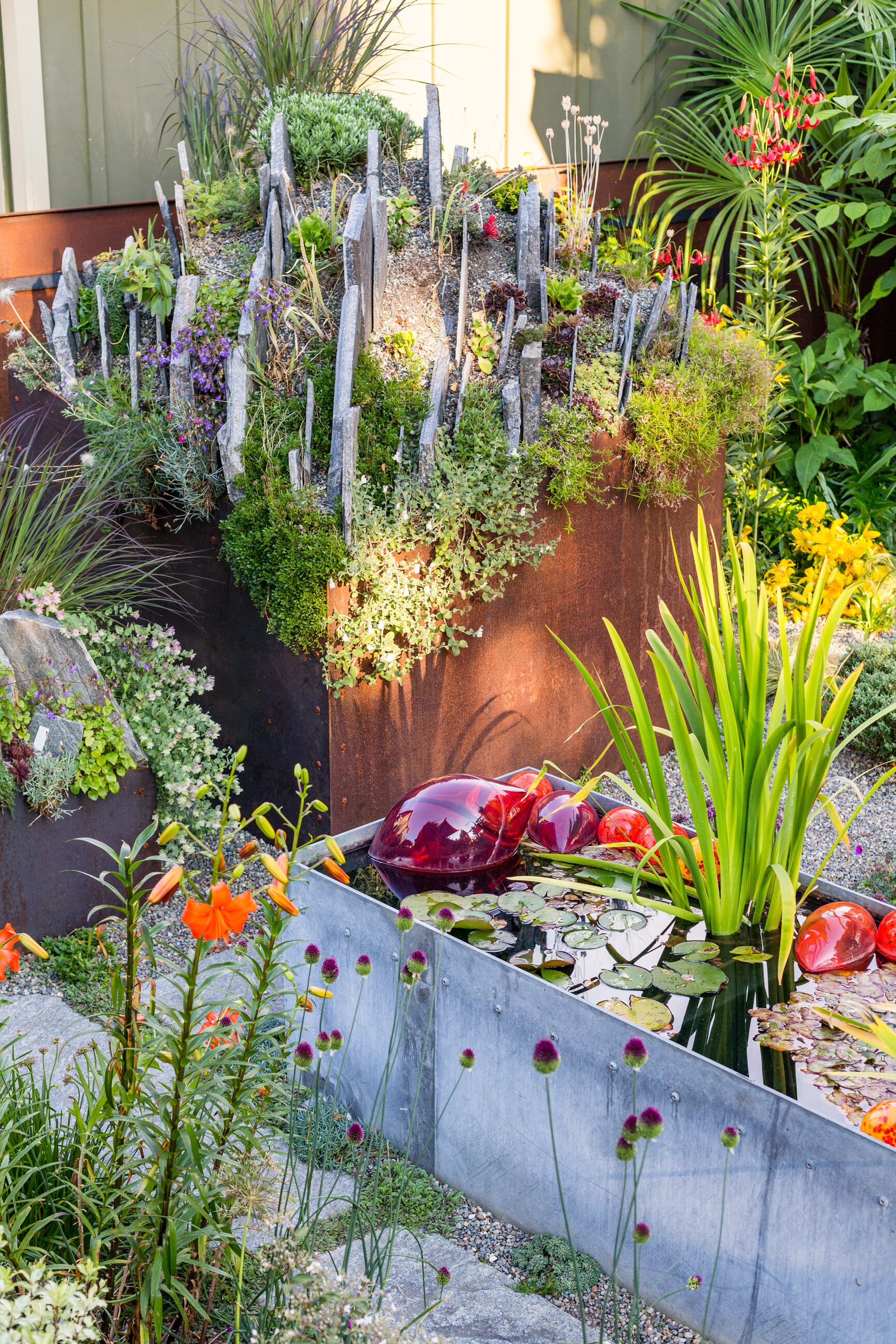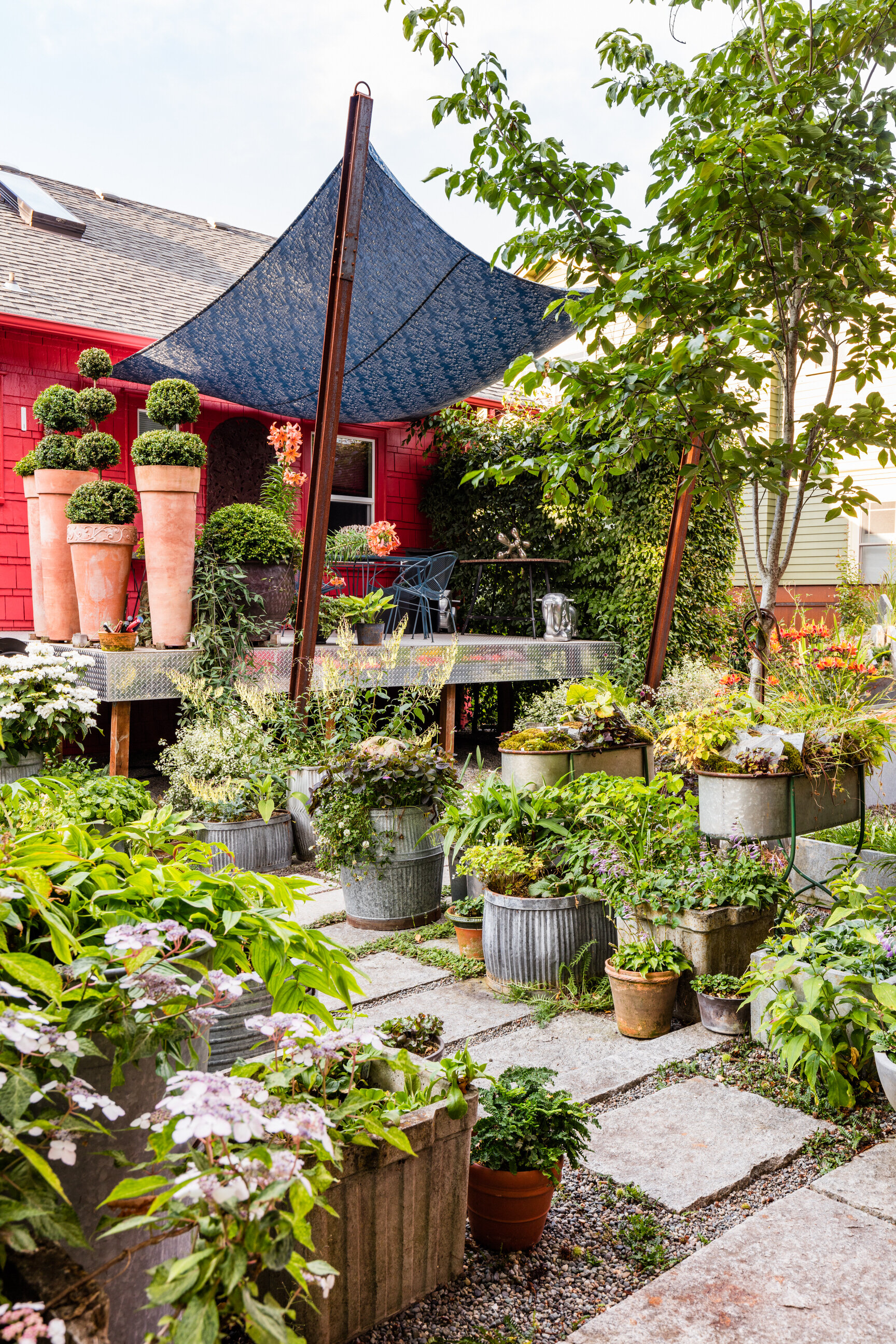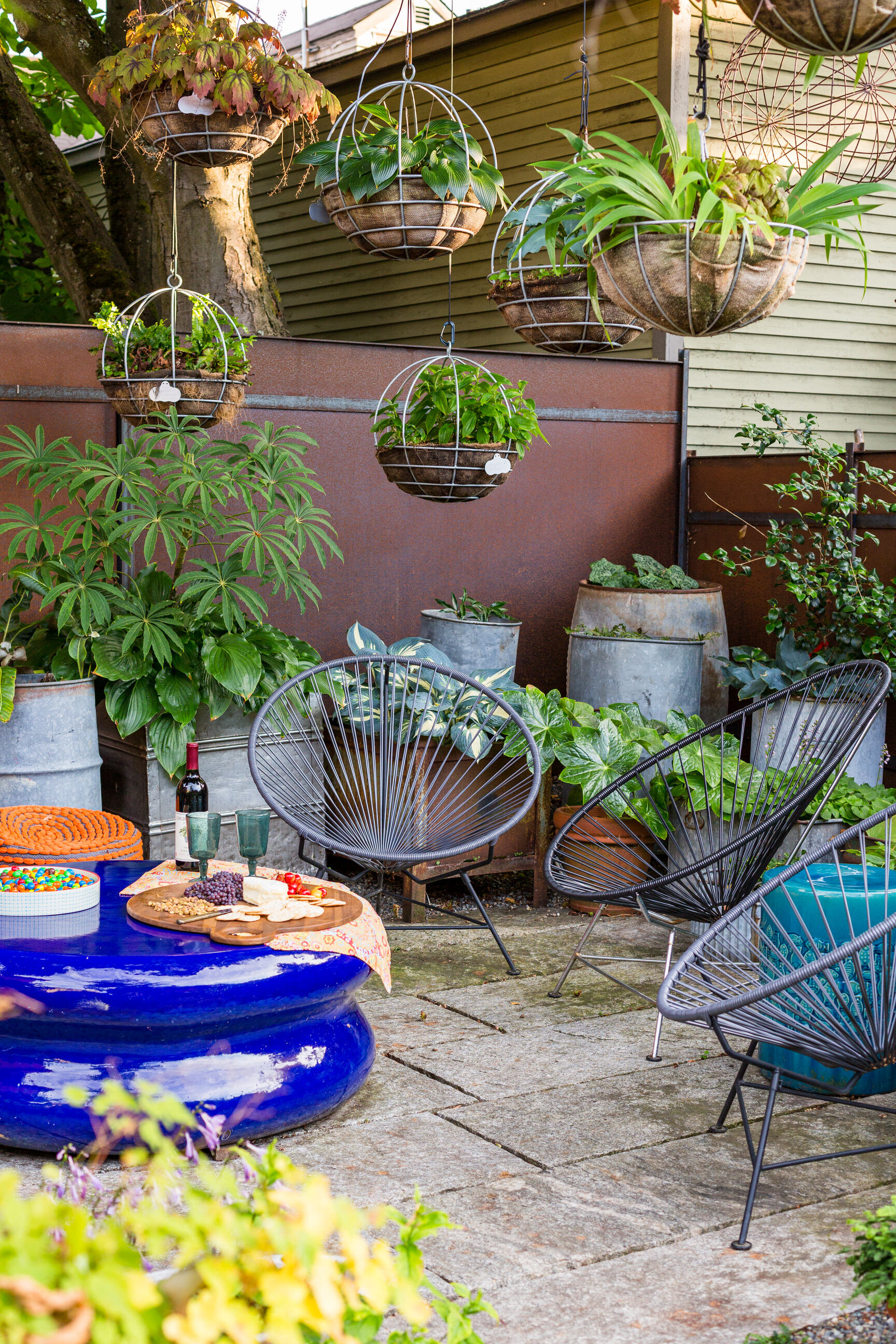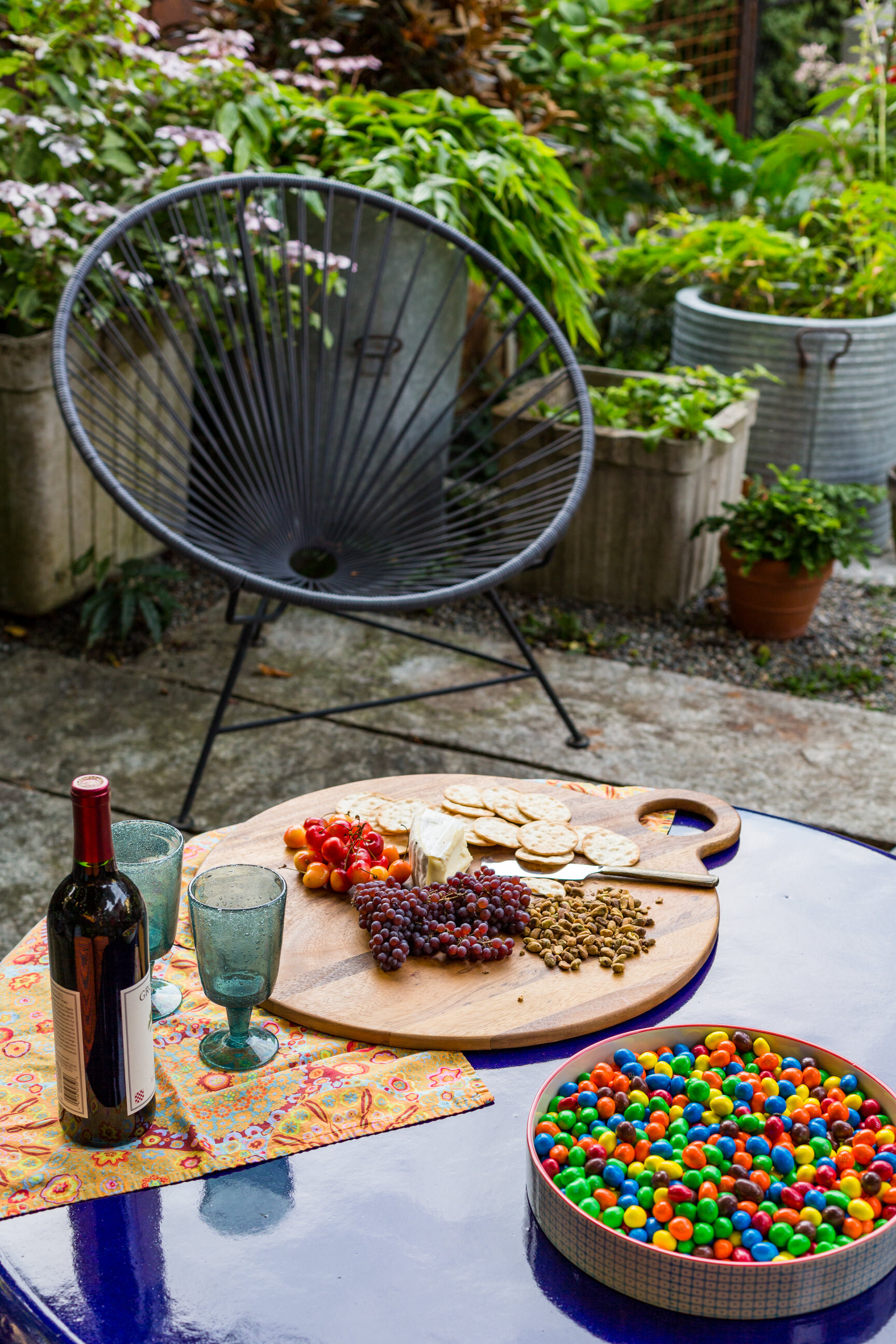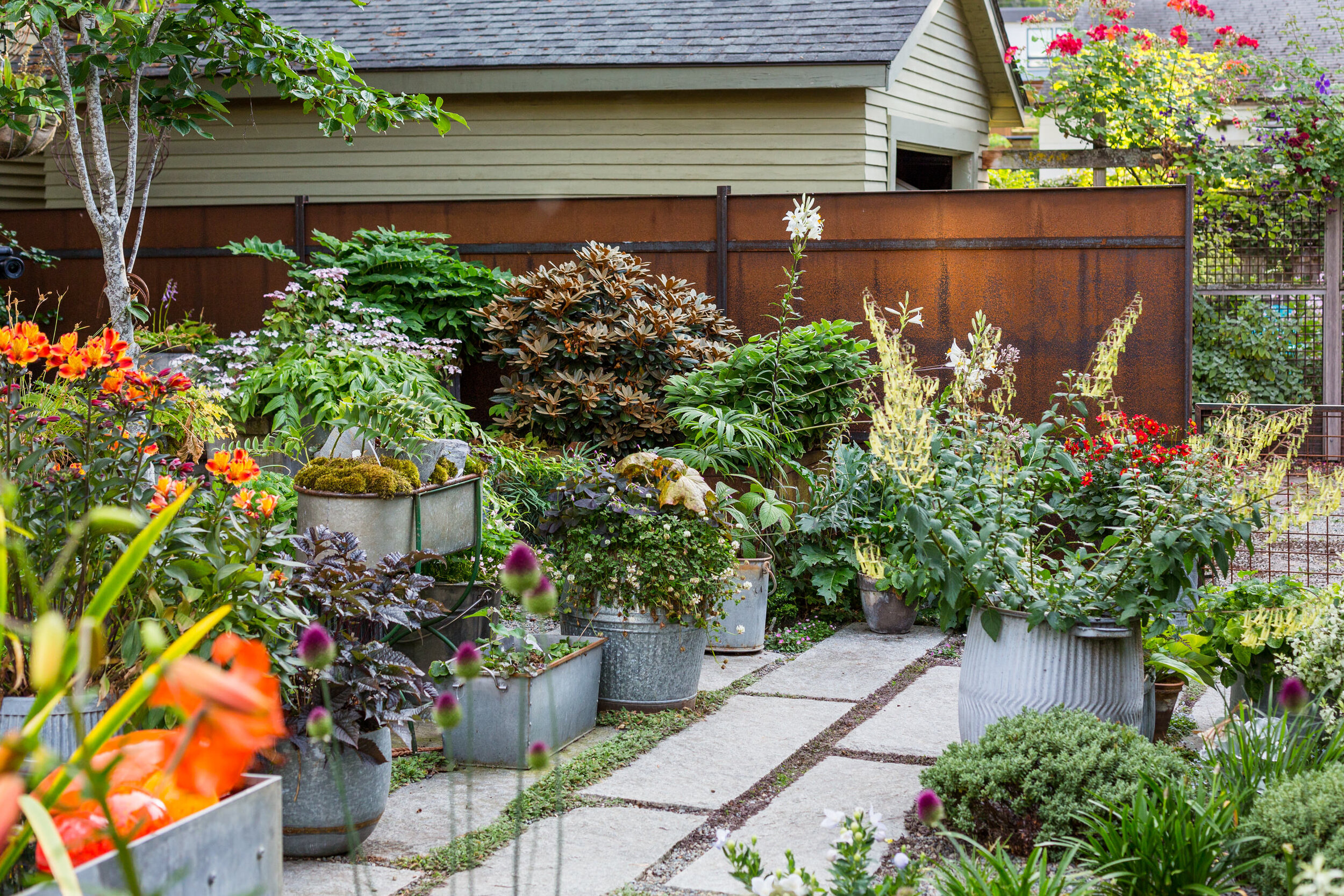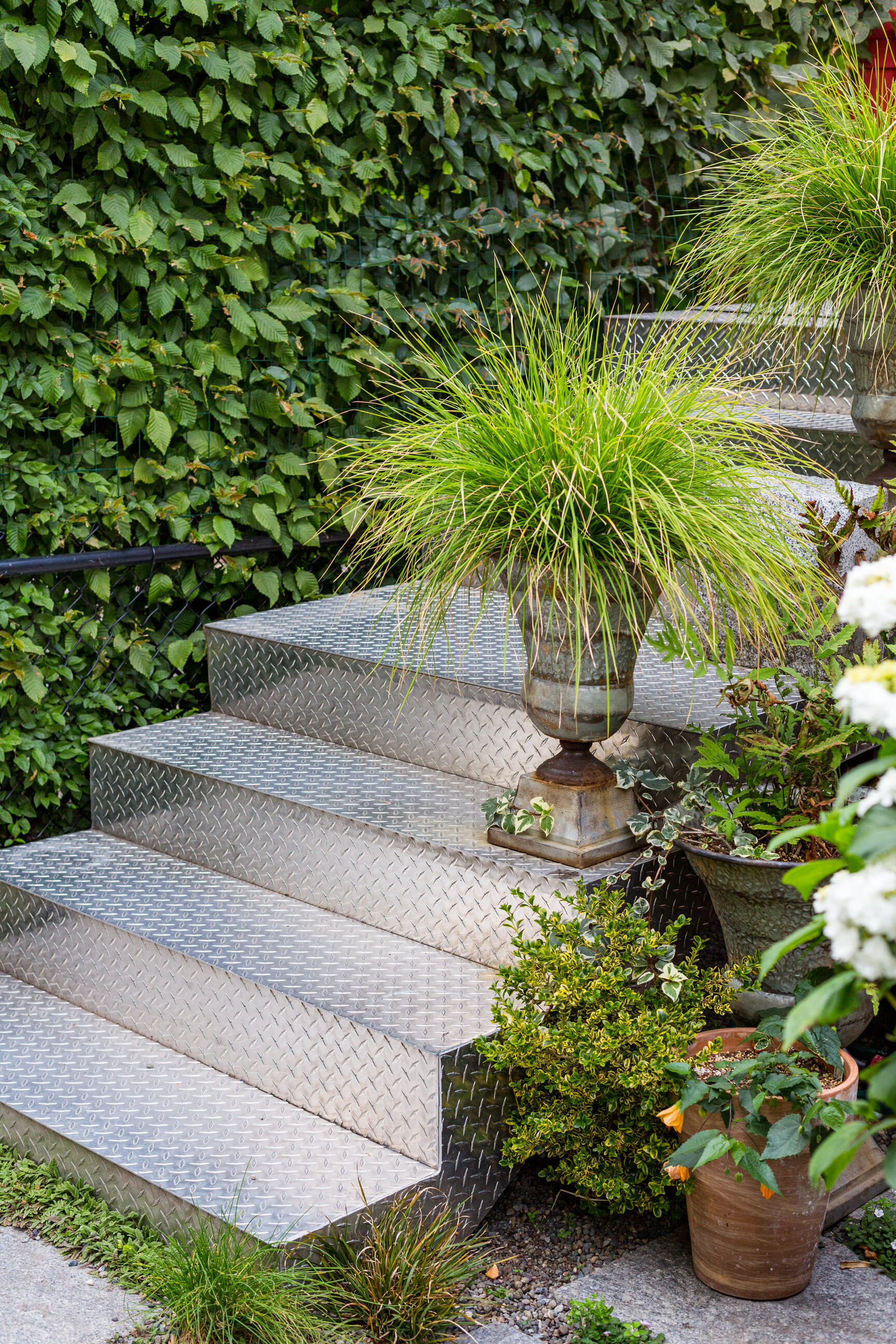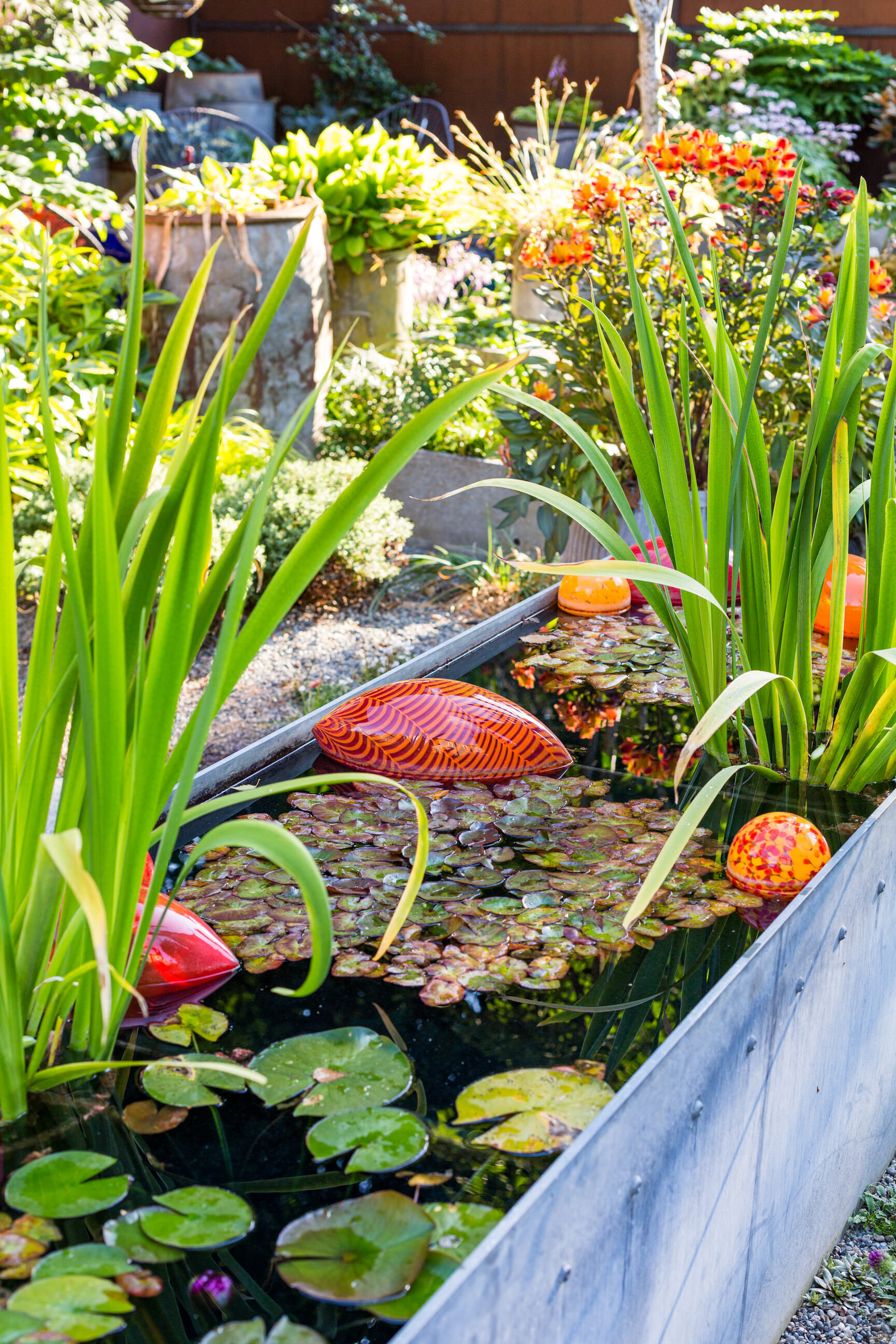Richard Hartlage - Land Morphology
In this installment of The Creative Garden, a look into the private home landscapes of designers and artists, I’ve explored the colorful, controlled chaos of landscape designer, Richard Hartlage.
Tucked among a charming neighborhood of Craftsman bungalows, Richard Hartlage’s distinctly vermillion home sits high above the sidewalk, enveloped by a continuously changing succession of color, texture and fragrance. A robust boxwood planting, clipped into a serpentine pattern that slithers up and down the hillside provides pockets for great clusters of blooms and stands in distinct contrast to a hulking stone stair that leads to the front door. Large and small surprises abound, offering moments of delight, humor and wonder around every corner. A gigantic terra cotta pot towers over it all and gives the entire experience a thoroughly Alice in Wonderland vibe. Let’s continue the tour, in Richard’s own words;
Growing Joy
“Humor is what brings me most joy and so I am always playing in my garden. I can do this there with the use plants, objects and materials that are more playful and less serious; the swarm of hanging baskets suspended from the tree, the elephant and seahorse that were formerly from a child’s nickel ride and the floats in the water feature which are abstracted gold fish inspired from a Matisse painting.” RH
Playing Favorites
{My favorite moment in the garden} “changes with the day and seasons. I plan for the moments of interest to move through the garden every day. The front meadow goes from daffodils, to tulips, to alliums and lilies with perennials coming in mid and late summer and those have big visual impact; but I love the collections of species crocuses and hoop petticoat daffodils that bloom singly from November through March. The latter are the moments that are private for myself because generally no one is around or would care about a single rare flower.” RH
On Inspiration
“I have loved and studied horticulture, gardening and landscape architect since my teens. Inspiration is hard to pin down. I am constantly looking at books and magazines and visiting the great historic gardens and seminal new projects. It just all gets jumbled and comes back out.” RH
“Art asks questions and design answers them.”
In a world full of bland backyard lawns, Richard’s riotous space throws the notion of restraint out the window; every square inch of space screams for attention (in the best way.) A platform of diamond plate aluminum hovers above the garden, placing diners at the perfect vantage to observe the carnival in its entirety. Though small, the space has been carved into a series of moments that invite the viewer to explore. Although it’s clear from one glance that Richard is an accomplished horticulturalist and collector, the presentation is infused with whimsy and devoid of the sense that anything is too precious.
Constant Evolution
{My next project is} “a large rose arbor over the front walk. I have chosen an old climber ‘Peggy Martin’ that is magenta pink for an intentional clash with the vermilion of the house. She is a monster and I learned to train the huge climbing roses from the turn of the century, so I am looking forward to a big slash, the Zen of slowing pruning and training a rose that grows to 30’ length. If I get tired of her, she will come out and be replaced. I just dismantled 50% of my front garden meadow and changed the color scheme from hot pinks and lavender to blue and lavender and yellow. Friends asked why I would do that in the middle of summer—I say because I have time and I want a change. There is next year! I worry that I cut up bulbs when replanting so I will plant more this fall to bolster the display. Gardens never stop evolving and at home I can change it as much and often as I want to.” RH
Making it Happen
{Implementation has come through} “experimenting and design on site. No drawings and working directly with the various crafts people. Spray paint is always a big help to visualize changes to space. I do trial new plants and test ideas—like the crevice garden, which is an old idea but in a modern form. And I do not consider myself an artist. I view myself more as a craftsman- taking design elements and studying them to solve problems. Art asks questions and design answers them.” RH
Garden as Teacher
“CHANGE is inevitable! You can embrace it and move forward constantly evaluating how to composed a scene or let it die and compost in front of you fighting it.” RH

